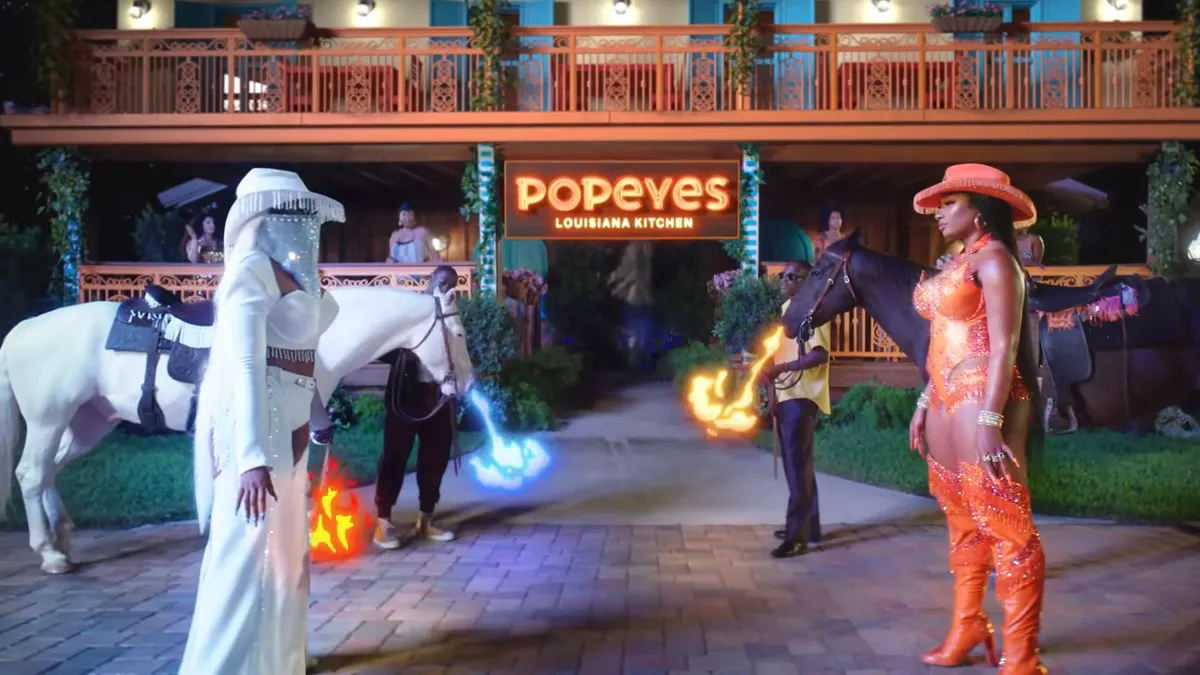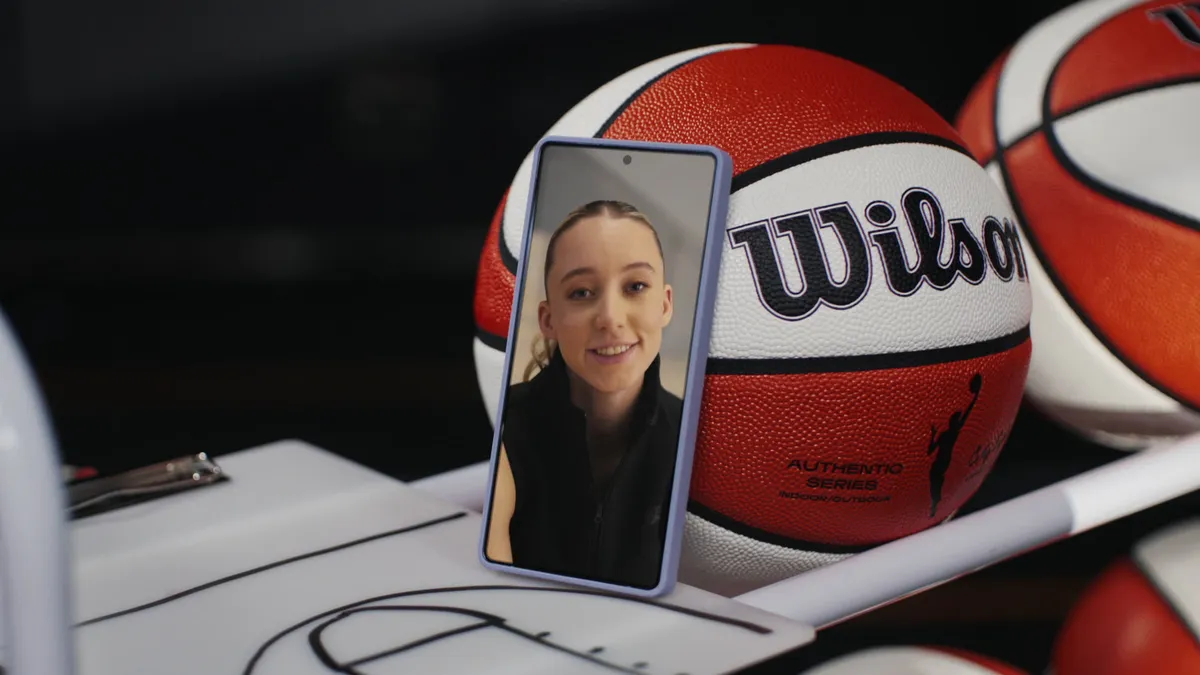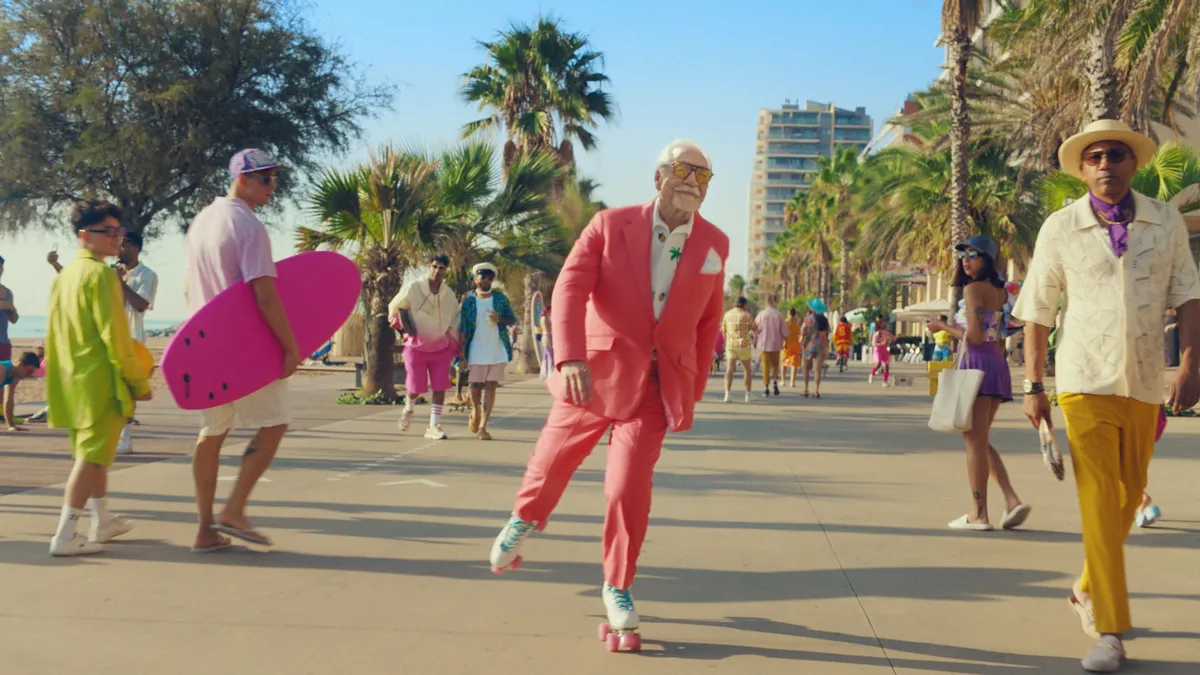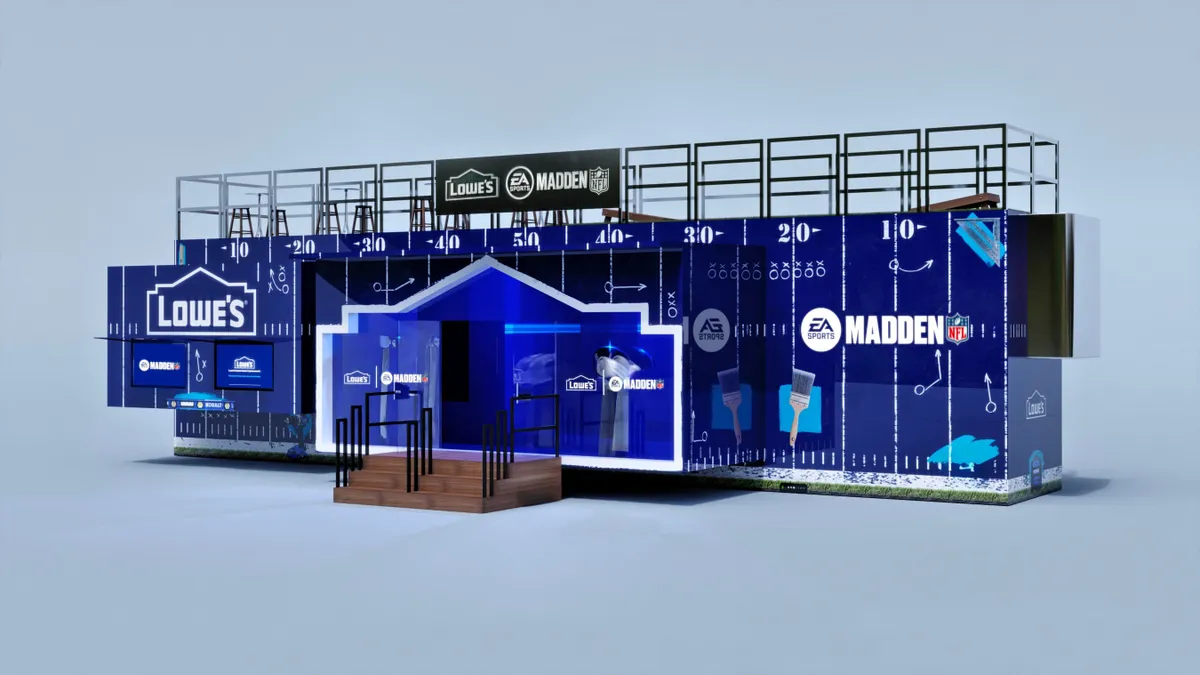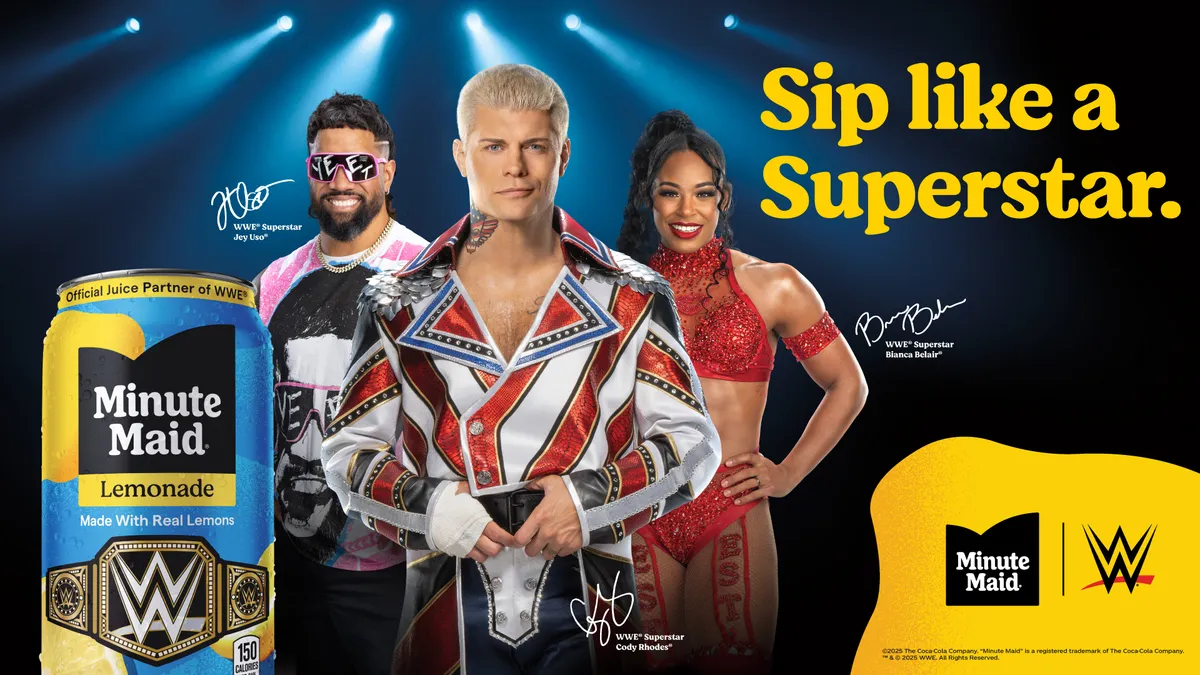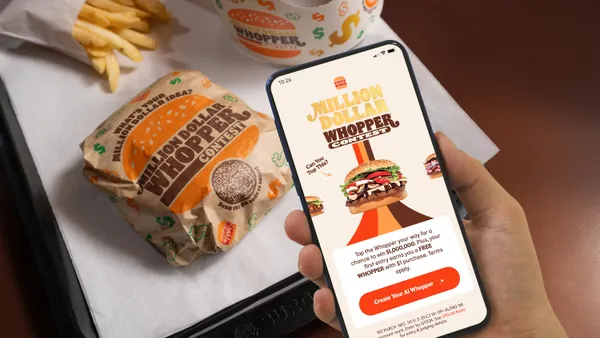Despite 2021's unfulfilled promises across many fronts, some creative efforts have proved enduring. They captured the cultural moment or felt keyed into what's coming, with brands jumping on viral TikTok trends based on classic TV spots or rolling the dice on the emerging concept of a metaverse. A sense of fun made a welcome return following a grim 2020.
Not everything panned out as expected for marketers. More widespread availability of COVID-19 vaccines in the spring inspired optimistic campaigns pining for a return to old ways that has, in reality, only materialized in fits and starts — and could again be delayed by the spread of a new variant.
If experiments with NFTs or budding apps like Cameo represented an eye toward the new, plenty of companies also brought back old chestnuts with adjusted tactics. Experiential marketing, a favorite of pre-pandemic days, resurfaced, but with hybrid and contactless elements that didn't sap out the fun.
There were, of course, some misfires. Burger King UK in March took its provocative streak too far with a "Women belong in the kitchen" tweet intended to highlight culinary career inequalities that nevertheless read as a combination of clumsy and offensive. Volkswagen tricked the media into believing a "Voltswagen" rebrand reflecting a focus on electric vehicles was real, resulting in an April Fools' stunt gone sour. Such misses emphasize the necessity for even winning brands to keep a closer ear to the ground with culture, which has become its own speciality in marketing services.
Below, Marketing Dive breaks down the 2021 campaigns that were able to thread the needle deftly, balancing boldness with an execution that resonated with consumers. As marketers continue to reshape their businesses for a digital-first era in 2022, these concepts can serve as a guidepost for what's working on the messaging and media strategy fronts.
Coke gives gift of Cameo messages from Santa
Coca-Cola's advertising ties to Santa Claus stretch back to the 1920s, but the soda marketer upped the ante this year with a campaign that nods to the creator economy. The brand in November partnered with fan connection app Cameo to offer consumers the chance to request a custom video greeting from its interpretation of Saint Nick, mirroring how the service is used to pay for shoutouts from celebrities.
The creative underpins Coke's ongoing focus on personalization at scale, but also the fact that many families may be wary about visits to crowded malls for pictures with the holiday icon given COVID-19. Coke's take on Santa is additionally making his first "IRL," or in real life, appearance as part of the Coca-Cola Holiday Caravan, a traveling experience where families can receive free printed holiday photos with the jolly icon and sample products.
The effort is part of "Real Magic," the first major brand overhaul for the soda maker in five years. It's a platform to address a fragmented world in need of community, a theme embodied in a holiday ad that depicts a boy who inspires his apartment community to construct a makeshift chimney for Santa using cardboard boxes.
"The box has become the ubiquitous symbol of the pandemic," Ludwig+ CEO Barbara Yolles said over email. "This is Coke when Coke is at its best — the global inclusive brand."
Wendy's keeps experiential weird with 'Rick and Morty'
As experiential marketing remerged in 2021, Wendy's rose above with a pop-up inspired by its running partnership with the hit Adult Swim show "Rick and Morty." The immersive "Morty's" drive-thru at a California location was accessed through the gaping maws of giant inflatable versions of the show's characters leading to a tunnel adorned in screens displaying references to the edgy cartoon. Items on deck included a Pickle Rick Frosty inspired by a notorious episode and menu staples rebranded after fan-favorite characters, while mascot Wendy received a Morty-centric makeover.
Months out, the June activation remains noteworthy for tapping into changing dining habits, with an emphasis on the safety and convenience of the drive-thru, as well as culture-driven innovations that have dominated the fast food category as brands vie to woo young customers. On the latter front, Wendy's effort was a clear success, with reports that wait times to get into "Morty's" stretched for hours.
It's a concept Wendy's built on for the Adult Swim Festival in November, with a custom Morty's mobile vehicle delivering the chain's new Hot & Crispy Fries to eaters in the Los Angeles area. In a segment with plenty of mismatched tie-ups, Wendy's and "Rick and Morty" continue to key into an appealingly bizarre sensibility.
Sir, this is a Morty's. pic.twitter.com/u7B1GLMGLL
— Wendy's (@Wendys) June 18, 2021
"They've always shown their character in all of their communications, but in Morty's, they cleverly mashed up two brands [while] being true to themselves," said Code and Theory Chief Creative Officer Amy Carvajal over email.
Pepsi stakes its place in the future of food ordering
Ghost kitchens are forecast by some analysts to be a $1 trillion market by the close of the decade, suggesting brands that move early on the opportunity could reap serious rewards. Pepsi took its first crack at the space by opening a Pep's Place virtual restaurant in May that asked visitors to pick their favorite drink from its portfolio and then paired the selection with an ideal dish.
The "beverage-first" direct-to-consumer offering, which ran 30 days online and through third-party delivery apps, kicked off a "Better With Pepsi" platform that has seen the soda marketer continue to innovate in a world increasingly dominated by takeout and delivery. Ahead of Memorial Day, the brand enacted a marketing blitz claiming Pepsi pairs better with burgers in a shot to chief rival Coke, which has partnerships with category leaders Wendy's, Burger King and McDonald's.
Beyond marking a return to the types of brand sparring that animated fast food marketing in the pre-pandemic world, the campaign was another indication that Pepsi sees an opportunity to shore up its positioning as changing dining habits create greater flexibility.
"With a lot of takeout and people bringing food home nowadays, I think there's a lot more choices in beverages," Todd Kaplan, vice president of marketing at PepsiCo, previously told Marketing Dive about the burger push. "A lot of people will pair the drinks with what they want and can have the freedom to optimize their beverage choices."
Crown Royal experiments with hybrid worlds
While some brands are heading full-steam for the metaverse, others are experimenting with blending the real world and alternative ones. For its "A Whole New World of Cocktails" campaign in September, Diageo-owned Crown Royal unveiled a block party that inhabits this hybrid space. Using 3D-printing tech, the whisky brand turned a real cast of people and ready-to-print models into a miniature set, which was hand-painted and assembled for a 30-second spot.
As the camera pans through the party, viewers get the sense they're exploring a different world, with buildings replaced by giant cans of cocktails and time frozen to capture a bustling neighborhood in collective celebration. Realistic scenarios are intermixed as rapper DijahSB performs a new single for a crowd and pro gamer Erin Ashley Simon plays among friends.
The ad speaks to how brands are exploring creative concepts through extended reality. While not quite the metaverse, Crown Royal's 3D set contains fundamental similarities and shows how nascent technology is informing new waves of marketing experimentation.
"Virtual spaces … [allow] companies to tell their story and provide audiences with experiences that can push boundaries in the digital realm. This is a good look at the future, a combination of storytelling and participation that lives simultaneously in two realms of emotional engagement," said Christian Lachel, chief creative officer of BRC Imagination Arts.
Chipotle enters the metaverse with authenticity
This Halloween, Chipotle brought its long-running "Boorito" promotion to Roblox — a gaming platform that's seen increased marketer attention as interest in the metaverse picks up. Chipotle's activation included player skins, a virtual corn maze and $1 million worth of free burritos, but succeeded by focusing on a value exchange that is authentic to the platform and the audience, per Andrew Carlson, chief experience officer at Omnicom agency Organic.
"It added up to a brand experience that a gamer or Chipotle fan would choose to spend time with — not an ad grafted into a game. And that is both the opportunity and the trap for marketers who have never had more creative possibilities for reaching an audience — but only if they are willing to experiment," Carlson said via email.
The activation (which did not cause outages on Roblox, contrary to what some gamers believed) also demonstrated the brand's deep commitment to and understanding of the gaming community with which it frequently engages, whether through its category-exclusive Twitch partnership or its Chipotle Challenger Series tournament, now focused on Halo Infinite Multiplayer.
"Unlike a lot of brands hopping on the next buzzy thing in tech, what they are doing is best understood as building on a multi-year focus around reaching gamers as a core audience," Carlson said.
Tide avoids greenwashing with #TurnToCold efforts
Major marketers have worked to step up their commitments to sustainability, but in some cases can't cut greenhouse gas emissions associated with their products without consumer behavior changes. That is the case for Tide, which — despite cutting emissions at its factories 75% in the past decade — claims that more than two-thirds of emissions happen at the consumer-use part of the "laundry lifecycle."
With its #TurnToCold campaign, Tide urged consumers to wash three out of four loads of laundry in cold water, something it says would reduce an amount of greenhouse gas emissions equal to removing more than 1 million cars from the road for a year.
After launching the effort with a pair of celebrity "cold callers" — rapper Ice-T and wrestler "Stone Cold" Steve Austin — Tide reiterated the effort in August, leveraging its relationship with the NFL to reach the 80 million households that watch NFL games. Fans had a chance to win a Tide Cold Washer, a talking washing machine that features the voices of 10 NFL players, including quarterback Matt Ryan, who also appeared in TV spots.
With the campaign, Tide did everything right — almost to a fault, said Carolyn Hadlock, executive creative director and principal at agency Young and Laramore.
"From a strategic and integration perspective, it's a homerun," Hadlock said in emailed comments. "The only problem is the execution lacks an emotional connection. It's so even-handed that it fails to inspire and engage on a deeper level. It's rational. Which maybe that's the point. And maybe that's effective for this effort."
Burger King's NFT entry gamifies engagement
Nonfungible tokens (NFTs) made headlines in March 2021 after a piece of digital artwork sold for $69 million, igniting a flurry of interest around the blockchain-based tech. The craze soon seeped into the marketing world, with brands from Charmin to Coca-Cola quickly jumping on the bandwagon to drum up buzz.
Burger King dove into the trend in September with an activation that offers value beyond mere digital art and extended the introduction of its new Keep It Real Meal campaign — custom orders curated by celebrity ambassadors — tied to the burger chain's elimination of 120 artificial ingredients from its menu. The QSR teamed with NFT marketplace Sweet on a set-completion game that let customers scan QR codes on meal boxes to receive one of three collective NFT game pieces. Once the full set is collected, customers automatically get a fourth prize, which could be a 3D digital collectible, free Whopper sandwiches for a year, autographed merch or a call with one of the campaign's celebrity ambassadors.
Structuring the program as such let Burger King elevate NFTs from a tech-powered stunt to a tool for customer engagement and loyalty generation. The chain's gamified approach also helps to fuel a more exhilarating customer experience during a time when expectations are inconsistent and difficult to predict, Marcel Hollerbach, chief innovation officer at Productsup, said in emailed comments.
"By replicating the feeling of receiving a kid's meal toy as an adult, Burger King is banking on the emotional connections some customers have held onto for over 60 years to draw them back in," Hollerbach said.
Starburst jumps on Little Lad's TikTok resurgence
When Starburst released its "Berries and Cream" spot in 2007, it surely didn't plan for the TV ad to resurface 14 years later online. Fast forward to August 2021, the candy brand saw its spot notch more than 1 billion videos on TikTok. The Mars Wrigley-owned line soon embraced the buzz with fresh hashtags, a new "Berries and Cream" song and a Little Lad Halloween costume — a take on the old-timey schoolboy attire seen in the original ad.
Starburst's quick moves helped it capitalize on cultural buzz during peak candy season. But while the campaign's ascendance to the top of the TikTok charts nods to the app's unique ability to turn organic discussions into viral hits, deliberately trying to go viral likely would have been a recipe for failure.
"For a brand to be successful with a trend really comes down to permission. They have to ask themselves, ‘will my interaction feel authentic and add value or am I just being opportunistic and jumping on the bandwagon?'" Jason Berk, Sid Lee USA's head of social and digital, said via email. "Here Starburst had permission. They were the originator, had context, insight and were able to provide value through their extensions."
Nostalgia is a common tack in marketing, but Berries and Cream's resurgence may extend beyond that trend, as the folks making up TikTok's young user base likely don't remember the original 2007 ad. The launch promo felt organic to the social video platform and offered a clear role for Starburst in the conversation without sacrificing the Little Lad's virality.
"This proves one important thing that brands continue to forget in our digital era. TikTok is not (just) for kids. It's for the kid in all of us," Tom Ajello, senior partner at Lippincott, said in emailed comments.
Popeyes finds a perfect partner in Megan Thee Stallion
Driven to match the success of McDonald's Famous Orders platform that has seen the fast food giant team up with the likes of Travis Scott and BTS, QSRs have lined up to offer their own take on celebrity-inspired — or anti-celebrity-inspired – meals. Instead of using a celebrity partnership as an opportunity to spar with competitors, Popeyes teamed with hip-hop star Megan Thee Stallion for an effort much more significant than the Hottie Sauce at its core.
Along with branded merchandise, a music video-style short — starring Megan and her alter ego Tina Snow — and a loyalty program tie-in, tactics that have been de rigueur for brands looking to tap into culture, the rapper became a franchise owner and made plans to work on a six-figure donation to Houston Random Acts of Kindness — literally taking ownership of the effort and a purpose-driven element. Taken together, these elements allowed for a deeper partnership and strong campaign.
"This campaign is more authentic compared to previous campaigns we've seen fast food restaurants take part in," said Brandon Brown, CEO and co-founder of creator management platform Grin, in emailed comments.
As with other musically based marketing efforts, authenticity was key for Popeyes' celebrity pairing.
"The fact that Megan has been a longtime fan of Popeyes (even before this endorsement) and that she and the brand collaborated so closely on this campaign, speaks volumes to customers who are seeking more genuine brand / creator relationships in the market," Brown added.
Clarification: This story has been updated to more accurately describe Grin's purview.


